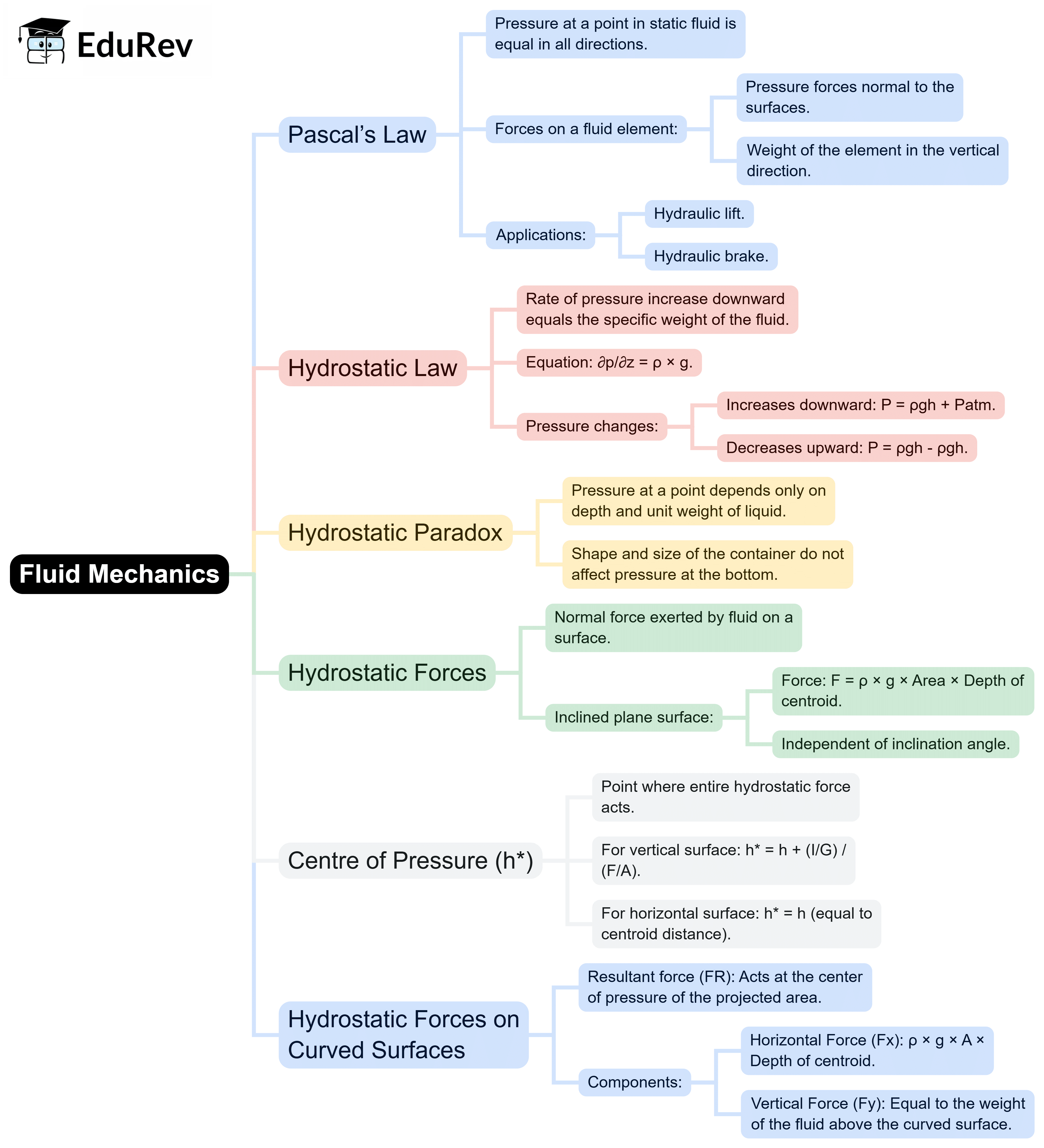Mechanical Engineering Exam > Mechanical Engineering Notes > Fluid Mechanics for Mechanical Engineering > Mind Map: Hydrostatic Forces on Surfaces
Mind Map: Hydrostatic Forces on Surfaces | Fluid Mechanics for Mechanical Engineering PDF Download

The document Mind Map: Hydrostatic Forces on Surfaces | Fluid Mechanics for Mechanical Engineering is a part of the Mechanical Engineering Course Fluid Mechanics for Mechanical Engineering.
All you need of Mechanical Engineering at this link: Mechanical Engineering
|
56 videos|146 docs|75 tests
|
FAQs on Mind Map: Hydrostatic Forces on Surfaces - Fluid Mechanics for Mechanical Engineering
| 1. What are hydrostatic forces and how do they act on submerged surfaces? |  |
Ans. Hydrostatic forces refer to the forces exerted by a fluid at rest due to the gravitational pull acting on it. These forces act on submerged surfaces and are directed perpendicular to the surface. The magnitude of these forces depends on the fluid density, the depth of the fluid above the surface, and the area of the surface.
| 2. How is the hydrostatic pressure calculated at a given depth in a fluid? |  |
Ans. Hydrostatic pressure (P) at a given depth (h) in a fluid can be calculated using the formula P = ρgh, where ρ is the fluid density, g is the acceleration due to gravity, and h is the depth. This pressure increases linearly with depth due to the weight of the fluid above.
| 3. What is the significance of the center of pressure in hydrostatic force calculations? |  |
Ans. The center of pressure is the point on a submerged surface where the total hydrostatic force can be considered to act. It is significant because it helps in determining the moment created by the hydrostatic force about a pivot point. The center of pressure is located below the centroid of the area for vertical surfaces.
| 4. How do different shapes of submerged surfaces affect hydrostatic force calculations? |  |
Ans. Different shapes of submerged surfaces affect the distribution of hydrostatic pressure across the surface area, which in turn affects the total hydrostatic force. For example, a flat surface will have a uniform pressure distribution, while a curved surface will have varying pressures that need to be integrated over the surface for accurate force calculations.
| 5. What are some practical applications of understanding hydrostatic forces in engineering? |  |
Ans. Understanding hydrostatic forces is crucial in various engineering applications, such as designing dams, ships, and underwater structures. It is also important in hydraulic systems, water treatment facilities, and any scenario where fluid forces impact structural integrity and stability.
Related Searches
















